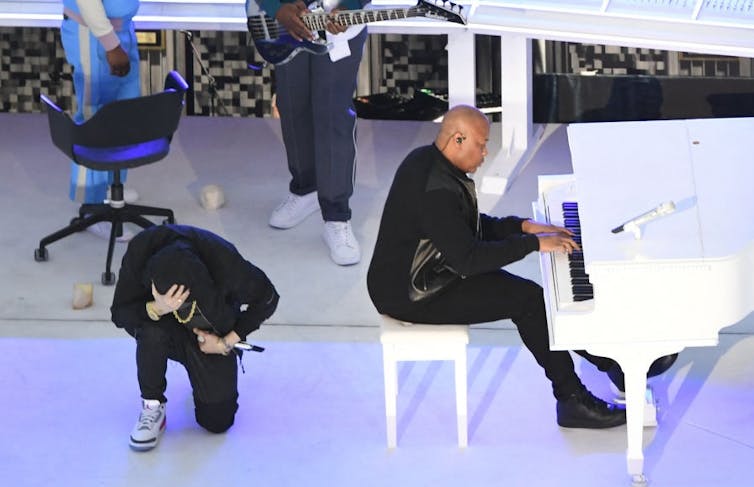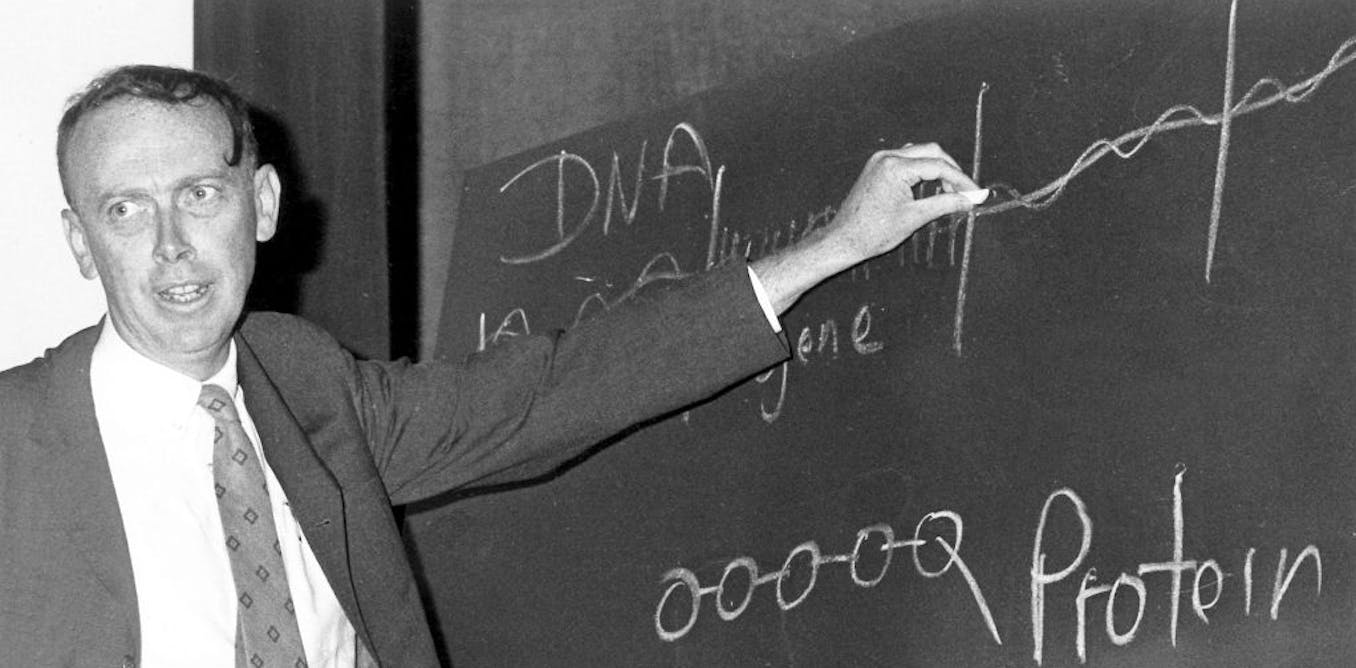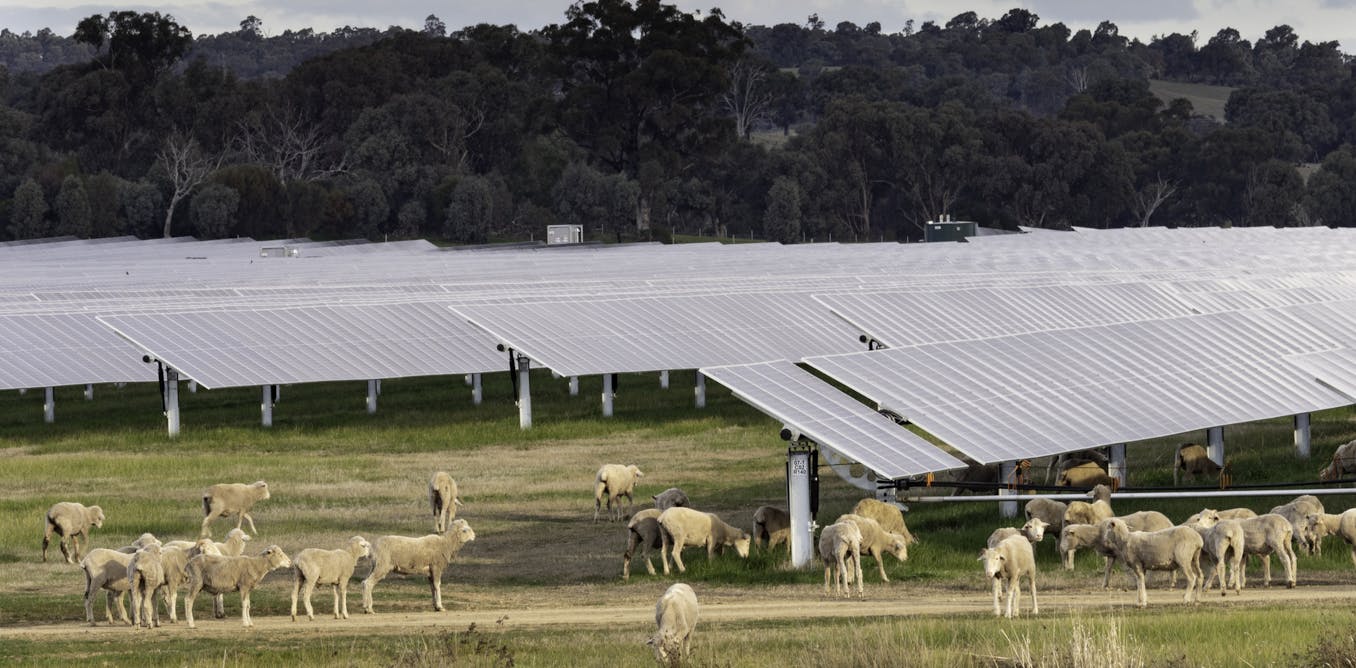In the September 2024 NFL ad announcing Kendrick Lamar as the halftime performer at Super Bowl 59, the 37-year-old rapper stands before a colossal American flag, feeding footballs into a machine that launches the balls to wide receivers.
“Will you be pulling up? I hope so,” he says, plugging his forthcoming appearance on one of the world’s biggest stages, where the cultural stakes can be as high as the athletic ones. “Wear your best dress too, even if you’re watching from home.”
The casual yet evocative scene was classic Kendrick.
As a world-renowned Grammy- and Pulitzer Prize-winning artist, Lamar stands in a league of his own. His unflinching critiques of racial injustice, systemic inequality and the exploitation of Black culture have made him a boundary-pushing artist and cultural visionary.
My work examines how race and racism are constructed, represented and challenged in mass media, particularly in news, music and sports. I think the NFL’s complicated history with social justice makes his participation even more significant.
With a discography expansive enough to eclipse the time constraints of Sunday’s game, I’m eager to see whether Lamar will weave his lyrical masterpieces into a performance that entertains, educates and challenges viewers.
Sports, politics and backlash
Sports have always been political, despite persistent calls to keep politics out of sports.
The tradition of playing the national anthem before sporting events is but one example: The song is rooted in wartime sorrow and serves as a call to patriotism.
Then there are unsanctioned acts of protests by players and fans. Whenever professional athletes go on strike, it’s political. When fans unfurl banners in support of Palestinians, it’s political.
From Tommie Smith and John Carlos’ fist-raising at the 1968 Olympics in solidarity with Black communities during the Civil Rights Movement, to Muhammad Ali’s refusal to fight in the Vietnam War, to Colin Kaepernick’s kneeling to protest police brutality, athletes have long used their platforms to confront injustice and challenge norms.
Yet, acts of protest often incite backlash, and the NFL has haphazardly tried to police political speech.
Kaepernick’s protests sparked a national debate about ideas of patriotism and the appropriateness of protest on the playing field. At the same time, NFL owners appeared to effectively blacklist him from the league.
Nick Bosa, a defensive end with the 49ers, was fined for violating a rule forbidding players from wearing clothes conveying “personal messages” when he wore a MAGA hat during a postgame interview in 2024. Meanwhile, NFL owners have donated millions to presidential campaigns, with most of those contributions given to Republican candidates.
Kevin C. Cox/Getty Images
An artist and activist
The Super Bowl halftime show has long been more than just a musical interlude. It’s a stage where cultural and political currents converge.
During Beyoncé’s 2016 appearance alongside headliner Bruno Mars, she paid homage to the Black Panthers, Malcolm X and the Black Lives Matter movement. U2’s act during the 2002 Super Bowl provided a moment of collective mourning and hope for a country still reeling from the 9/11 terrorist attacks. More recently, Dr. Dre’s 2022 performance celebrated hip-hop’s rise from a marginalized genre to a dominant cultural force. Eminem, who also participated in that performance, took a knee on stage to critique the NFL’s treatment of Black athletes and activists.

Valerie Macon/AFP via Getty Images
To me, Lamar’s Super Bowl appearance symbolizes a broader reckoning with how the NFL handles the tension between politics and corporate entertainment.
That’s because Kendrick Lamar’s artistry is more than just music. It’s activism.
From his Grammy award-winning album “To Pimp a Butterfly” to the raw, introspective, Pulitzer Prize-winning album “DAMN.,” Lamar has consistently confronted themes of systemic oppression, racial injustice and Black life in America.
Tracks like “DNA.” are unapologetic celebrations of Blackness and generational resilience:
I got loyalty, got royalty inside my DNA
Quarter piece, got war and peace inside my DNA
I got power, poison, pain and joy inside my DNA
I got hustle, though, ambition flow inside my DNA
“The Blacker the Berry” delves into the complexities of Black identity and confronting systemic racism:
I said they treat me like a slave, cah me Black
Woi, we feel whole heap of pain cah we Black
And man a say they put me inna chains cah we Black
And “XXX.” confronts the greed, violence and hypocrisy at the core of American life.
Hail Mary, Jesus and Joseph
The great American flag
Is wrapped and dragged with explosives
Compulsive disorder, sons and daughters
Barricaded blocks and borders, look what you taught us
It's murder on my street
Your street, back streets, Wall Street
Unlike many mainstream artists, Lamar seems to have mastered the delicate balance between commercial success and politically charged content. His genius lies in his ability to write songs that transcend race, gender and class.
At a time when the nation grapples with efforts to dismantle diversity, equity and inclusion practices, and as corporate power continues to go unchecked, conversations about race and inequality remain at the fore.
Lamar has never hesitated to confront uncomfortable truths through his music. He has a unique opportunity to merge art, activism and a critique of the nation. I expect this moment will be no exception.
Will you be pulling up? I will.

The post “Kendrick Lamar’s big Super Bowl moment” by Christina L. Myers, Assistant Professor of Journalism, Michigan State University was published on 02/06/2025 by theconversation.com





































Leave a Reply